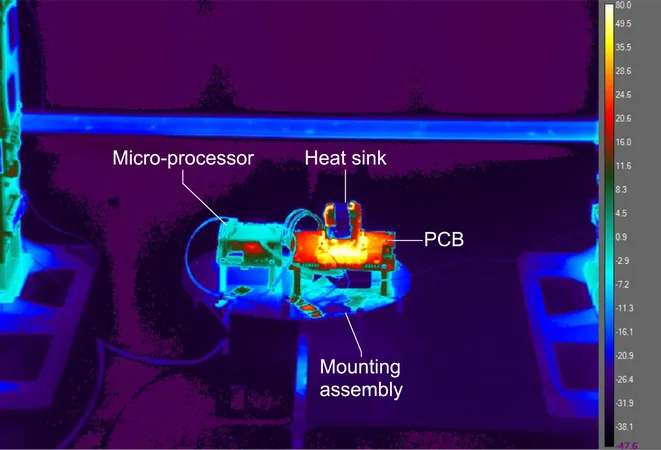
Does a Liberal Transfusion Strategy Actually Boost Quality of Life in Acute MI Patients?
2025-06-06
Author: Ming
The Surprising Findings of the MINT Trial
Recent analysis from the MINT trial has raised eyebrows by revealing that a liberal transfusion strategy for patients experiencing acute myocardial infarction (MI) accompanied by anemia does not enhance quality of life, contrary to what many might expect.
Although there were hints that patients with type 1 MI and those with underlying heart failure might see slight gains, investigators caution that these results are merely suggestive and require further exploration.
What the Lead Investigator Says
Dr. Micah Prochaska from the University of Chicago, who spearheaded the study, emphasized, "I would still recommend a liberal transfusion strategy. It does not harm quality of life; however, if you hope to boost their quality of life with this approach, the evidence isn't strong enough to support that aim."
The Study's Background and Results
The MINT trial enrolled a substantial participant pool of 3,504 acute MI patients with hemoglobin levels below 10 g/dL, splitting them into two groups: one receiving a liberal strategy aiming for hemoglobin above 10 g/dL and the other a restrictive method capping transfusions until levels dropped to 7-8 g/dL.
While the study fell short of hitting its primary endpoint, it did provide intriguing clues. Notably, all-cause mortality or MI occurred in 16.9% of the restrictive group versus 14.5% in the liberal group, missing statistical significance just barely (RR 1.15; 95% CI 0.99-1.34). Cardiac mortality also showed a trend with 5.2% in the restrictive group compared to only 3.2% in the liberal group (RR 1.74; 95% CI 1.26-2.40).
Digging Deeper into Quality of Life
The secondary analysis, recently showcased at the International Society of Blood Transfusion congress in Milan and published in JAMA Internal Medicine, was predicated on the idea that boosting oxygen delivery to the heart and muscles could alleviate common anemia symptoms like fatigue and breathlessness.
Prochaska noted, "The rationale for transfusing blood is often to help patients feel better. Given that reduced oxygen delivery leads to symptoms of anemia, I believed this strategy could prove beneficial." However, he acknowledged the dual challenge posed by myocardial infarction itself in detracting from quality of life.
Subgroup Insights
Focusing on 2,844 patients with documented quality-of-life metrics at 30 days, results showed no significant differences in quality-of-life scores between the two transfusion approaches. Metrics were gauged using the EQ-5D-5L tool, evaluating five dimensions of life: usual activities, anxiety/depression, mobility, pain/discomfort, and self-care.
Yet, intriguing patterns emerged in specific subgroups. Patients with type 1 MI exhibited better outcomes in usual activities, mobility, and overall health scores when administered a liberal transfusion strategy, compared to their restrictive counterparts. Similar trends appeared in heart failure patients, with notable improvements in their overall self-reported health.
Potential For Future Research
While the subgroup discoveries remain hypothesis-generating, Prochaska expressed optimism that with more extensive studies, significant quality-of-life improvements in certain populations could be observed.
He underscored, "Quality of life encompasses a range of factors, and improvements in physical function do not always equate to decreases in anxiety or depression. It’s important to remember that such mental health aspects can be influenced by various factors beyond the immediate medical interventions."
In conclusion, the MINT trial supports a liberal red blood cell transfusion strategy for acute MI patients with anemia, although the anticipated boost in quality of life remains a complex and nuanced topic.



 Brasil (PT)
Brasil (PT)
 Canada (EN)
Canada (EN)
 Chile (ES)
Chile (ES)
 Česko (CS)
Česko (CS)
 대한민국 (KO)
대한민국 (KO)
 España (ES)
España (ES)
 France (FR)
France (FR)
 Hong Kong (EN)
Hong Kong (EN)
 Italia (IT)
Italia (IT)
 日本 (JA)
日本 (JA)
 Magyarország (HU)
Magyarország (HU)
 Norge (NO)
Norge (NO)
 Polska (PL)
Polska (PL)
 Schweiz (DE)
Schweiz (DE)
 Singapore (EN)
Singapore (EN)
 Sverige (SV)
Sverige (SV)
 Suomi (FI)
Suomi (FI)
 Türkiye (TR)
Türkiye (TR)
 الإمارات العربية المتحدة (AR)
الإمارات العربية المتحدة (AR)